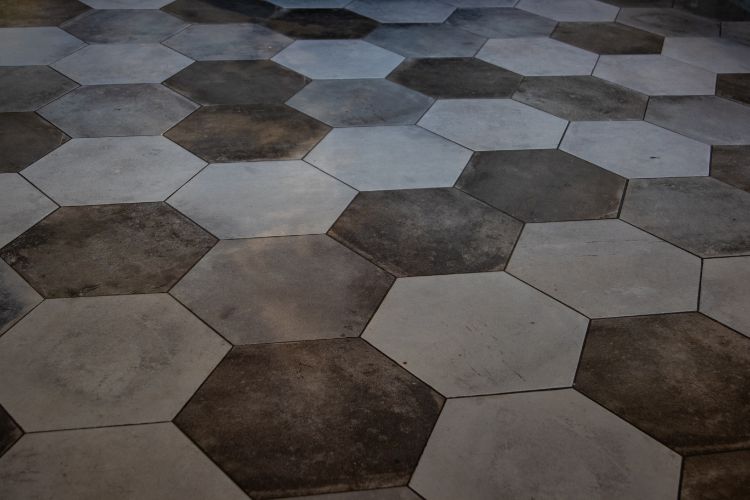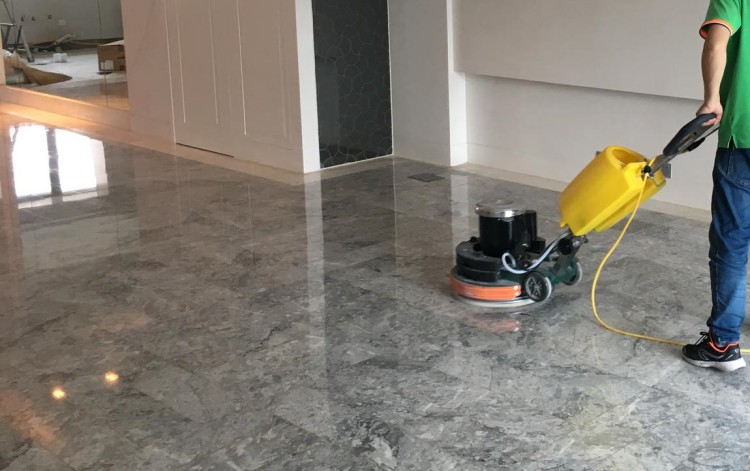Stone Grinding and Polishing Methods for Renovating Old Houses
Renovating an old house often involves restoring various materials such as wood, stone, etc. Stone renovation, in particular, requires careful attention to detail and specialized techniques to achieve a polished and revitalized appearance. In this article, we’ll explore the steps involved in stone grinding and polishing, and gain insight into the stone resurfacing process as part of an old home renovation.

Rough Grinding and Leveling of Stones for Renovation of Old Houses
Rough grinding and leveling of stone plays a vital role in the renovation of old homes, especially in restoring the beauty and functionality of stone surfaces. Whether it's marble, granite, limestone, or any other type of natural stone, the roughening process involves the use of specialized equipment and techniques to address imperfections and wear and tear that accumulate over time.
One of the primary methods of rough grinding is to use a diamond grinding disc on a stone grinder. This powerful combination allows for precise sanding and leveling of stone surfaces, effectively addressing cuts, unevenness, scratches, and other forms of damage that may occur due to deformation, paving, machining, or general wear and tear. By removing efflorescence and stains from the stone's surface, rough sanding helps bring out the material's natural beauty while also enhancing its durability and longevity.
In the case of renovating an older home, roughening and smoothing the stone can be particularly beneficial for several reasons. First, it can repair worn and damaged stone surfaces, restoring their original luster and appeal. This is especially important for historic homes or buildings, where preserving the authenticity of the original stone features is a priority. Additionally, rough sanding can address safety concerns by smoothing out uneven surfaces and eliminating potential tripping hazards.
Additionally, the rough grinding and smoothing process of the stone helps to improve overall indoor air quality in older homes. Over time, stone surfaces can accumulate dirt, grime, and contaminants, which not only diminishes their aesthetics but also affects the air quality within your living space. Removing these contaminants through rough grinding rejuvenates the stone surface, creating a healthier and more pleasant environment for the occupants.
In summary, rough grinding and smoothing of stone is an important part of the renovation process for older homes, especially those with obvious stone features. Through the use of diamond discs and stone grinders, skilled professionals can effectively address imperfections, wear, and contamination on a stone's surface, ultimately restoring its beauty, functionality, and longevity. This process not only enhances the aesthetic appeal of the property but also helps preserve its historical and architectural significance.
Fine Grinding of Stone for Renovation of Old House
Fine polishing of stone is a critical step in renovating an old home, especially when it comes to achieving a smooth, flawless surface. The process involves using a diamond resin disc to refine the grindstone after initial rough grinding, effectively eliminating any remaining scratches and further improving the flatness of the grinding surface. This stage lays a solid foundation for subsequent fine grinding and polishing and is critical to achieving the desired aesthetic and functional results.
In the rough grinding process, the diamond grinding disc on the stone grinder is used to solve the cuts, unevenness, and scratches caused by various factors such as deformation, paving, and processing. The fine grinding stage is crucial to obtain the original surface. The purpose of the fine grinding process is to remove any residual scratches left by rough grinding and ensure that the surface of the stone is free of blemishes and blemishes. This meticulous approach not only enhances the stone's visual appeal but also helps improve its overall durability and longevity.
In addition to eliminating scratches, fine grinding also has the function of further adjusting the flatness of the grinding surface. This is essential to ensure that the stone surface is level and even, creating a seamless and polished appearance that is both beautiful and functional. Precision grinding improves the flatness of the stone, laying the foundation for subsequent polishing and finishing processes, and ultimately achieving high-quality, professional renovation of old houses.
It is important to emphasize that the fine grinding of stone should be done with precision and expertise to achieve the best results. The use of diamond resin grinding discs requires skill and attention to detail to ensure that scratches left by rough grinding are effectively eliminated without causing damage to the stone surface. In addition, appropriate techniques and equipment must be used to achieve the required flatness and smoothness in preparation for the final stages of the renovation process.
The ultimate goal of refinishing an old house is to bring the quality and appearance of the stone surface back to its original level. By carefully polishing the stone and eliminating scratches, fine grinding sets the stage for the subsequent polishing and finishing process, ensuring that the refurbished stone surface exudes elegance, durability and timeless beauty. This attention to detail and commitment to achieving a flawless finish was essential in retaining the historic and architectural significance of the old home while enhancing its overall appeal and functionality.

Inspection and Repair of Stone Materials for Renovation of Old Houses
Renovations of older homes often involve stone restoration, which can add a touch of timeless elegance to the property. However, before these materials can fully demonstrate their charm, they often require a thorough inspection and restoration to ensure they are in top condition. The inspection and repair process is critical to ensuring the longevity and beauty of your stone and involves a series of meticulous steps to address any damage or imperfections.
After rough grinding and smoothing are complete, the inspection phase begins. This involves a detailed assessment of the stone to identify any holes, cracks, or broken edges that need to be repaired.
The restoration process usually involves the use of resin or marble glue to correct the identified problems. Holes, cracks, broken edges, and corners are carefully filled and repaired to restore the structural integrity of the stone. The goal of this restoration phase is to correct any damage and ensure the stone is in a suitable condition for renovation.
After the initial restoration, the stone was finely ground to further refine its surface. However, this step is not the final stage of the process. After the fine grinding is complete, another round of inspection and repair is required. This is essential to address any new cracks or gaps that may appear during the grinding process. Use resin or stone marble glue again to repair these defects and ensure that the stone achieves a smooth and full effect.
Meticulousness in the inspection and restoration process is critical to achieving high-quality results when remodeling an older home. By carefully addressing any damage or imperfections in the stone, the overall beauty and structural integrity of the property can be preserved and enhanced. Additionally, a thorough inspection and restoration can help extend the life of your stones, ensuring they continue to exude their timeless beauty for years to come.
Fine Grinding and Polishing of Stone for Renovation of Old Houses
The fine grinding and polishing of stone plays a key role in the renovation of old homes, especially in improving the aesthetics and durability of the surface. This meticulous process involves the use of specialized equipment and techniques to achieve a smooth, lustrous finish that revitalizes the stone's appearance.
The first step in the fine grinding and polishing process is to use 800 grit, 1500 grit resin diamond pads or 800 grit, 1500 grit, 3000 grit wet diamond polishing pads to fine grind and polish the floor. This stage is critical to refining the stone's surface, eliminating any imperfections, and achieving an even, polished look.
One of the main benefits of fine grinding and polishing is the dramatic improvement in gloss. Through this process, the surface density of the marble stone is enhanced, resulting in a significant increase in gloss. In fact, the glossiness of stone can generally reach 70 degrees, which means that the overall appearance and visual appeal are substantially improved.
The purpose of precision grinding and polishing is twofold: polishing and improving the beauty of the stone. The surface is carefully polished through fine grinding and polishing to highlight the natural beauty of the stone, creating a luxurious and sophisticated finish that adds timeless elegance to the renovated space.
Additionally, the fine grinding and polishing process helps increase the durability and longevity of the stone. By achieving a smooth, polished surface, the stone is better able to withstand daily wear and tear, making it more resistant to scratches, stains, and other forms of damage. Not only does this enhance the visual appeal of the renovated space, but it also ensures that the stone remains pristine for years to come.
Recrystallization Hardening Treatment of Stone Surface for Renovation of Old Houses
Renovation of old houses often involves the restoration of stone surfaces, and a key part of this process is recrystallization hardening. This special treatment is designed to enhance the durability and beauty of stone surfaces, providing a transformative effect that revitalizes the appearance of the material.
The concept of stone recrystallization hardening treatment revolves around the use of a special material called stone crystal powder. This powder combines with the structure and organization of the stone surface through heat generated by friction under mechanical action and undergoes a microrheological reaction. This reaction leads to the formation of a relatively hard and bright mixed crystal layer, which effectively improves the hardness and wear resistance of the stone.
The treatment begins with a thorough cleaning of the stone surface using an all-purpose cleaner and a red scouring pad. This step is essential to remove any dirt, grime, or residue that may have accumulated on the surface, ensuring the stone is ready for subsequent treatments.
After cleaning, the next step is to mix marble crystal powder and water into a paste at a ratio of 1:1 and apply it on the red polishing pad. This prepared mixture is then used to grind directly onto the stone surface, initiating a calcification reaction that restores the original brightness of the stone.
Recrystallization hardening treatment offers several significant benefits for retrofitting older homes. First, it enhances the hardness and wear resistance of the stone, making it more resilient to daily use and environmental factors. This increased durability ensures that the stone surface remains pristine for a long time, extending the life of the renovation project.
Additionally, the treatment significantly improves the overall appearance of the stone surface. The recrystallization hardening process refreshes the stone's aesthetic qualities by restoring its original brightness and introducing a bright, hard texture, creating a luxurious and refined finish that adds a timeless elegance to the renovated space.
 English
English  Português
Português  русский
русский  Chinese
Chinese  French
French  Japanese
Japanese  Spanish
Spanish 



